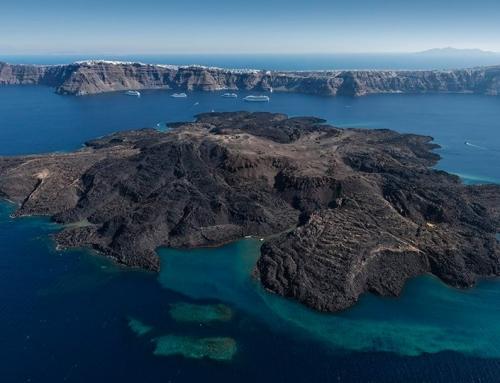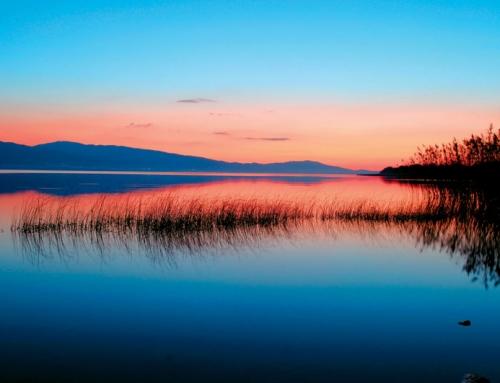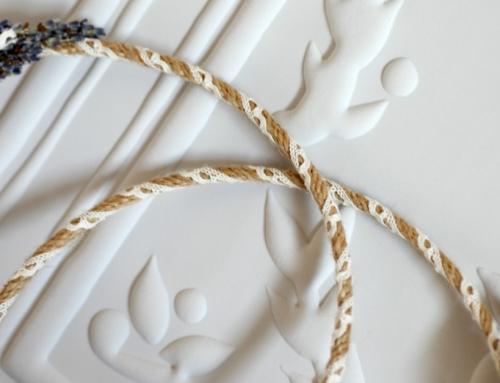This past summer while in Greece, I finally got to enjow and explore my favourite Greek city, Thesaloniki in September, when the temperatures finally fropped to a comfortable level. That period was in September and it’s a wonderful time to visit Thessaloniki.
The city is Greece’s second largest city with a population of about 1.5 million and it’s located about 5 hours north of Athens (Greece’s capital). Thessaloniki was a cosmopolitan European city that thrived with a mix of Greek, Turkish, Armenian and Jewish populations.
Thessaloniki’s port was and still is an important trade conduit for goods passing to and from the Balkans and its long history of merchants can still be viewed by visiting the Ladadika district. Located just across from the Port terminal, the Ladadika was the center of oil and spice merchants (hence the name) and it remains one of the city’s most popular destinations for both locals and tourists alike.
The Ladadika provides one with one of then best examples of how old Thessaloniki looked, before the great fire of 1917 and the many years of modernization where old buildings gave away to the pressures of urbanization and the erection of taller, “modern” buildings. Miraculously, the Ladadika district survived an earthquake (and later) fire that gutted much of the city.
During Turkish rule, the Ladadika was known as Istira or market in Turkish. The district was built on the site of the Port of Constantine the Great (4th Century AD). In 1990, the Ladadika was the benefactor of EU funds set aside to preserve, protect and revitalize areas of historical and architectural significance. I recall some of those oil and spice merchants still being there alongside some vacant buildings and a couple of brothels.
Today, the area is a mix of tavernas, eateries, bars, cafes, museums and hotels. I had the pleasure of staying at the Bristol Hotel, a member of the Yades Historic Greek Hotels, located on the west side of the main square. This 5-star boutique hotel was built in 1860 and it’s Thessaloniki’s only historic hotel and a member of the Historic Hotels of Europe.
If you’re like me, I like old things, including old hotels that have charm, are sympatico with its surroundings and keen to provide all the amenities a traveler looks for. Although located in the Ladadika, you can’t hear the din at night and the rooms are spacious with air conditioning/heating, comfortable bed, lots of pillows, wi-fi, lots of electrical plugs and a spacious bathroom/shower.
The staff speak English, their knowledge of the city is vast and they are more than happy to share their suggestions for you to check out while in Thessaloniki. Try out Negroponte (old name for the Greek island of Evia) or one of the Ladadika’s oldest eatery, Zythos. Also located in the Ladadika are the Museum of Ancient and Byzantine Instruments and the Jewish Museum.
The Port is nearby and as you walk there, stroll past Eleftherias Square, a solemn part of the city where the city’s Jews were rounded up by the Nazi’s during WW II. One you reach the Port, you can enjoy a drink at the Kitchen Bar or go for a stroll along Thessaloniki’s seaside promenade for a volta (evening stroll).
To the northeast of the Ladadika is the Kapani and Modiano Markets, another historical part of the city and where many Thessalonikeans still do their daily grocery shopping. There, you’ll hear green grocers, fish mongers and meat merchants touting their offerings. The Kapani is great for people watching for food photography.
A little further up the street is Egnatia Street where many of the city’s main street shops are located. Walk towards Venizelou then north you’ll find the Bit Pazar, the city’s long-running flea market where hawkers sell used and antique goods. This a great place for bargains!
The city’s upper walls in Eptapyrgos is worth a visit for an excellent vantage point to see the city’s span and to get one of the best views of the city from above. Here, you will also find some excellent examples of old homes that hug the meandering streets and you can stop off at a cafe or a taverna like Tyxo-Tyxo.
On your way back down into the city, stop by Tsinari, a taverna that’s located in the old Turkish district and have an Ouzo and meze while pondering how to enjoy Thessaloniki by night. After, head back down to the Bristol, have a siesta (like the Greeks do) and refresh yourself with a hot shower.
Thessaloniki offers one many options at night. You can grab a drink at one of the bars along Leoforos Nikis along the sea or grab a bite in one the many tavernas right under your nose in the Ladadika. You can stroll through Valaoritou Street (and area), where many of the city’s new bars and cafes have opened, serving a young, hip crowd.
Near the airport are some discos and Greek “bouzouki” clubs. Always check listings to see if reservations are required before heading out that way. Thessaloniki is a food lovers paradise with a wide mix of traditonal and modern Greek and international fare. It’s a city proud of it’s many cultural influences and you’ll find Bougatsa, souvlaki, koulouria and fish/seafood taverns within walking distance throughout the city.
Regardless of what you want to see in Thessaloniki and what pace you want to take, you will find the people friendly, open to engaging in a conversation with you and more than happy to recommend “their Thessaloniki” to you.
The next day, back at the Bristol, enjoy a breakfast that offers many Greek breakfast items like Bougatsa, cheese pies, omelets with Greek cheese, fresh bread with local fruit jams and Greek yogurt and honey. Try a Greek coffee to kick-start your day and go out and explore the city once again. From the Bristol, you have all of Thessaloniki at your footsteps.
by Peter Minaki, www.Kalofafas. ca
http://www.kalofagas.ca/2013/12/09/ladadika-district-thessaloniki-beyond/



